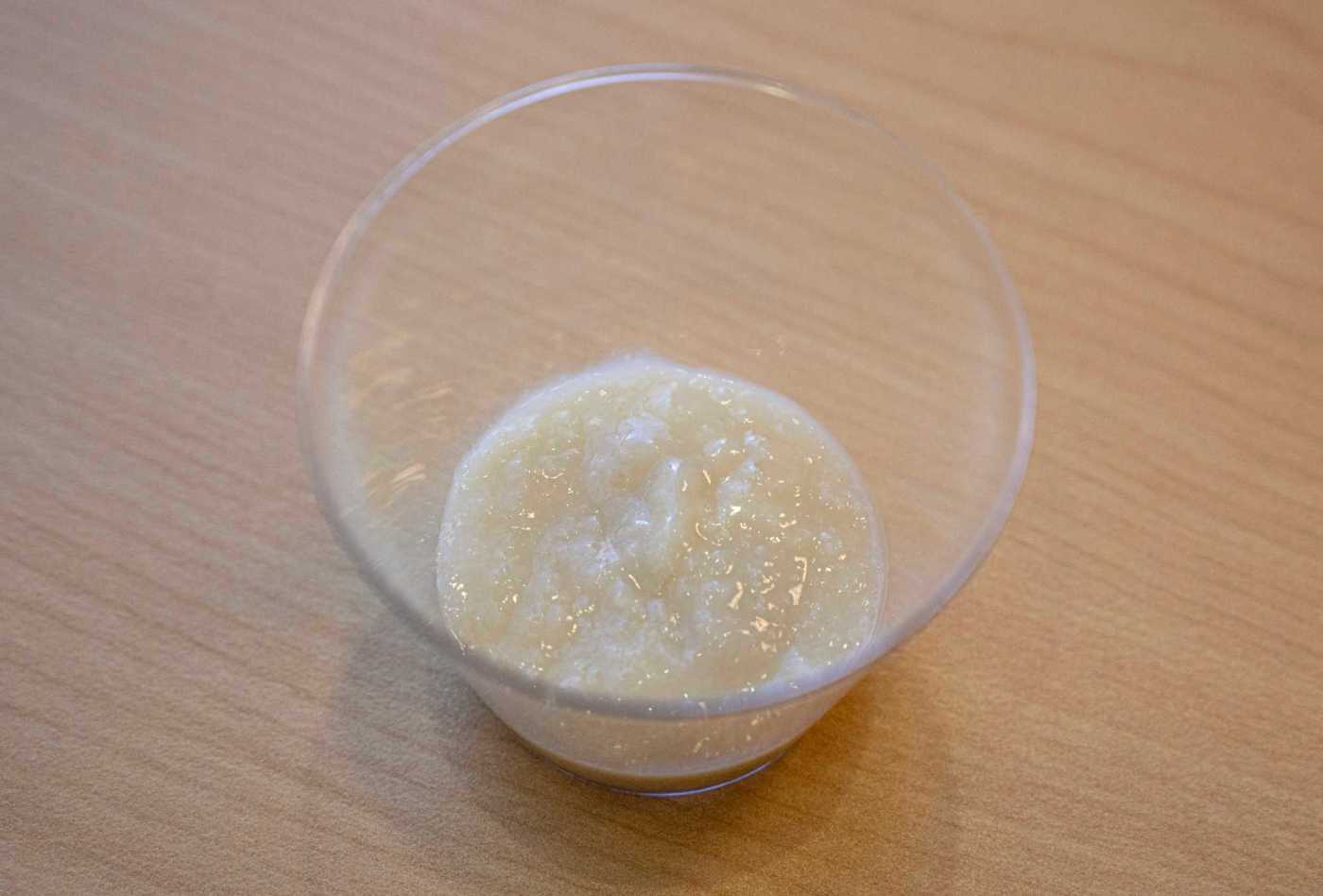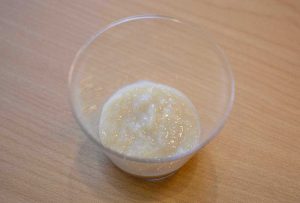
Koji, an ancient Japanese superfood, is having a moment
One day, Ayumi Takeuchi strolled into South Coast Plaza and inspiration struck. She saw a menu posted on the marquee at Populaire Modern Bistro. Listed underneath the duck dish description was the word: koji.
Takeuchi stopped in her tracks. Koji is one of the key ingredients in making miso. She works in marketing and business development at Marukome U.S.A., which was founded in Nagano, Japan in 1854. It’s also Japan’s number one miso company. In 2007, Marukome opened its stateside headquarters in Irvine. In addition to miso, Marukome produces different lines of koji for chefs and homecooks. It’s been available to American consumers for nearly a decade but most people are still unfamiliar with it.
After seeing koji listed on Populaire’s menu, Takeuchi asked to meet the chef. She wanted to learn more about how he was using koji in his cooking. It was especially interesting since Weber’s food isn’t Japanese. The menu skews French-inspired new American.
“I was using it to add umami and tenderize my duck breasts,” said Populaire’s chef, Nick Weber.
Weber has experimented with koji for a decade. Admittedly, he wasn’t using Marukome’s koji at first, instead he was fermenting his own.
“I started making miso at The Cannery,” Weber said, referring to an earlier chef’s gig. “I found out about koji through the Bar Tartine cookbook. Then I started experimenting.”
Weber used Spanish gigante beans (also known as white butter beans), garbanzos, and split peas to make his own California-driven miso. When he decided to open Populaire, he began fermenting more miso for the restaurant.
“It’s one of my own pantry ingredients that nobody else has and it just makes my cuisine unique,” said Weber.
He’s asked the Segerstroms for access to some of their lima beans that grow down the street. “I’m going to make a lima bean miso, so I can experiment with them for spring. Real local, down the street, local,” he said with a laugh.
Koji is an ancient Japanese superfood that most people have never heard of. In the past decade, it’s made headway in the U.S. and most people consume koji without even realizing it. It’s found in most Japanese foods. It’s a key component to making miso, and other fermented condiments such as soy sauce and rice vinegar. Distilled beverages including sake and Kikori rice whiskey also harness koji.
ALSO SEE: Recipe: How to use koji to make an Old-Fashioned
Marketing manager and miso master Toru Kuraishi led a tour at the Marukome U.S.A. factory in Irvine on Nov. 16. The building is distinguishable only by its red-hued logo, the company’s name positioned next to its Japanese cherub-looking ambassador. The subtle exterior hides what’s happening inside. This state-of-the-art, 3-acre factory is where ancient Japanese fermentation is executed at the industrial level.
Before entering the production facility where the steaming, fermenting and packing takes place, visitors and employees must pass through a decontamination room. In a closet-sized chamber, air jets remove unwanted particles from clothing.
Large glistening metal containers store miso in various stages. Workers dressed in disposable hairnets, face masks, jackets and booties transport the rice and soybeans in various states. The entire production — from cleaning the rice and soybeans to mixing, fermenting, aging, and packaging — all takes place in this facility.
Before the tour, Takeshi Azuma, president of Marukome, explained that though the company specializes in miso, there’s an increased interest in koji. It’s one of the key ingredients that goes into the miso, and the company has used it for centuries.
Los Angeles-based Kikori whiskey founder Ann Soh Woods hosted a koji workshop in September. She invited fermentation experts and bartenders to learn more about the fungi’s versatility. In O.C., chef Amy Lebrun had introduced diners to the ingredient and the book “Koji Alchemy” when she was previously at Fermentation Farm.
At Marukome U.S.A., koji is blossoming into big business. In 2024, the U.S. headquarters will open an interactive showroom. The space, which is currently under construction, will allow 10 guests at a time, to learn about koji and miso-making. Guests might sample cups of amazake, which is a rice-derived beverage without added salt or sugar, or learn about fermentation techniques that stem back thousands of years.
Kuraishi and chef Weber plan to show koji’s versatility in the space. Koji is the key element to making miso, but Weber has used it in creative ways. He enhanced his buttermilk sauce for his ebelskiver dish, which was ranked one of EATER L.A.’s hottest dishes to try in 2022.
Beyond the showroom, another addition to the company is a rice-based syrup.
“It’s like a sugar alternative,” said Weber.
The chef has used the golden-hued syrup, which has a viscosity similar to maple syrup or honey, to sweeten his rice pudding desserts. It’s called koji syrup but it’s simply a condensed version of amazake that’s been filtered and heated at a low temperature to draw out its natural sweetness. Marukome will start offering the koji syrup to consumers in 2024.
For now, Weber is gearing up for the showroom’s grand opening in January. “They want to do something, maybe a few dishes” said Weber. “Now I need to get with Toru to see what we can really do.”
Related Articles
City Council looks to make it easier to become a street vendor
Recipe: Make this tasty Mexican dish with your Thanksgiving leftovers
Build a Better: Thanksgiving leftovers? Hello, sandwich!
How long does leftover Thanksgiving turkey last?
Lots of leftovers? 11 recipes for all that Thanksgiving turkey (and more)


